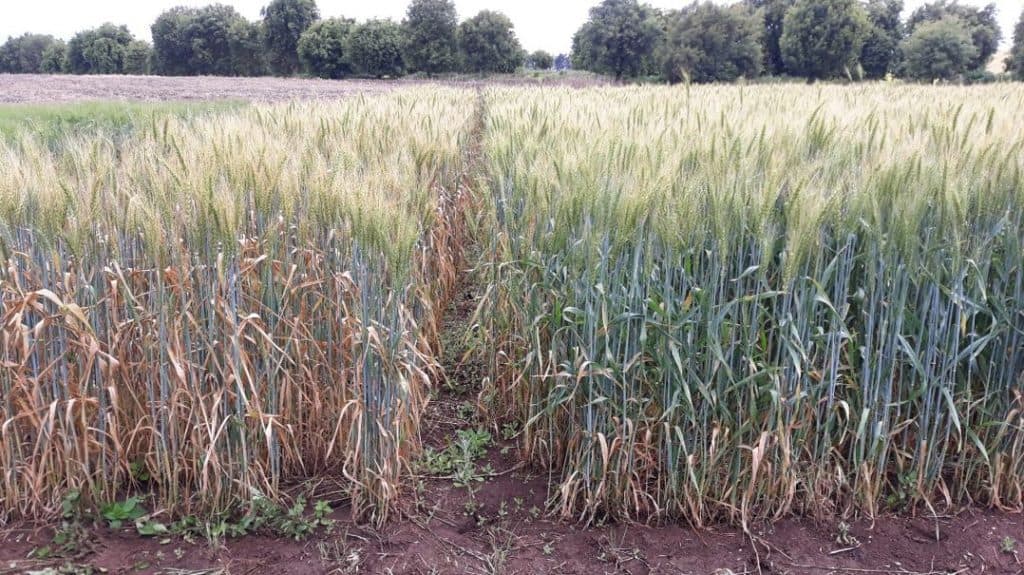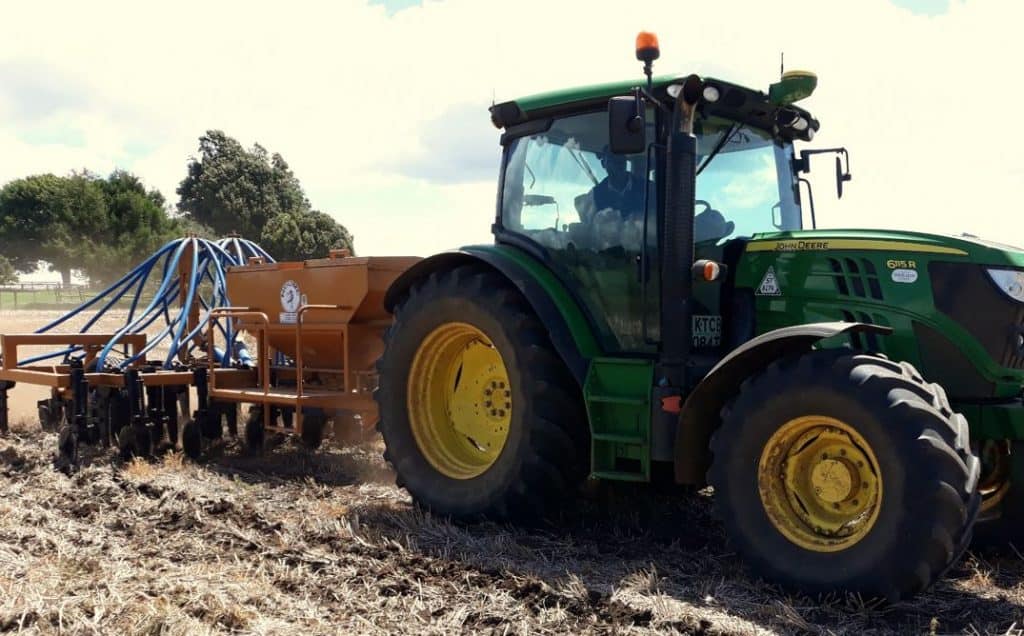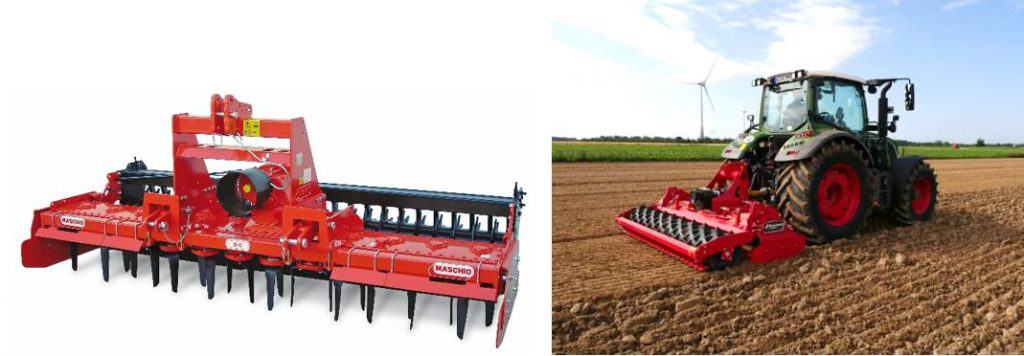
Bushel weight can make the difference between a profitable crop and one that you can’t even sell. Carrying on from our previous newsletter on how to improve your bushel weight, we take a look at how to get the fungicide program right to maximise your chances of getting a top price for your wheat.
Fungicide programs are complex because several diseases are at play at different stages, which is why we do several fungicide trials each year to perfect them. Below is a trial run in the variety Hawk in Mount Kenya region last season…
| Stage of crop | Fungicides | Specific Weight (Kg/hectolitre) |
| Untreated | 72.0 | |
| Flag Leaf | 1.0 Amistar | 72.0 |
| Flag Leaf Early flowering | 1.0 Skyway 0.75 Folicur | 72.8 |
| Early stem extension Flag Leaf Early flowering | 0.5 Rex Duo 1.0 Skyway 0.75 Folicur | 73.0 |
| Early stem extension Flag Leaf Early flowering | 0.5 Rex Duo 1.0 Skyway 0.75 Folicur + 0.75 Amistar | 74.4 |
| Early stem extension Flag Leaf Early flowering Milky ripe | 0.5 Rex Duo 1.0 Skyway 0.75 Folicur + 0.75 Amistar 0.75 Folicur + 0.75 Amistar | 76.0 |
Firstly, where NO fungicide was applied the bushel weight was 72kg per hectolitre. Terrible!
Where we applied just a single fungicide on the flag leaf, there was no improvement, but when we applied tebuconazole on the ear, the grain quality started to improve as Fusarium and Microdochium were controlled. But only to 73kg/hl.
Remember this variety Hawk is susceptible to Septoria, so adding 0.5 l/ha of Rex Duo early on helped retain the green leaf, and we got a bit more bushel weight. Up to 73kg/hl!

On top of this, Hawk is very susceptible to Stem Rust so when we added Amistar at flowering, this improved grain fill by keeping the Stem Rust out for a little longer. Up to 74.4 kg/hl!
And lastly where we controlled Stem Rust later with another dose of Tebuconazole and Amistar at milky ripe to keep the crop clean right through to maturity, 76kg/hl!
Not perfect still, but from 76kg/hl a pass through the cleaner will get that to 79-80kg/hl.
Independent agronomy…
The brand names of the fungicides are shown above, not as an endorsement but to show you what we used to good effect. Some good generic versions of these products (and some bad ones!) exist out there, see below.
And remember there are many, many approaches to disease control in wheat, this is not definitive but shows you the relative importance of each step.
Folicur (tebuconazole) – Ducasse, Orius, Tebicure
Amistar (azoxystrobin) – Othello, Milestone, Twiga-AZ
Rex Duo (epoxiconazole, with some thiophanate) – Swing SC, Soprano
Ndume have launched a direct drill for medium and large scale farmers, giving Kenyan growers the chance to buy a locally made seeder designed for our conditions. As increasing numbers of farmers explore notill farming, demand clearly exists for a simple yet accurate and robust machine that is capable of planting straight into residues from previous crops.

Having watched it work into some quite thick straw residue, I was seriously impressed and so were the farmers watching. Designing a seeder that can handle residue whilst remaining compact in size is no mean feat. As well as wheat and barley, the planter is capable of handling large seeds such as beans and peas, and Ndume claim it will accurately plant canola down to 1.5 kilos per hectare.
A leading row of discs cuts the residue ahead of each tine to minimise blockages, then a fertiliser leg followed by a seed tine allows seed and fertiliser to be placed independently for safer germination in small seeded crops.
The seed tine is suspended on a parallelogram to allow each row to follow the contours and undulations of the field, and a press wheel follows right behind, conserving moisture and ensuring seed to soil contact.
A range of sizes and configurations are available, so get in touch with Ndume at Gilgil.
At Cropnuts we are seeing an increasing number of medium and larger scale farmers looking at growing mechanised potatoes. This can provide good returns when it goes right, and it starts – and ends – with getting the seedbed right.
Potatoes need a fine, moist seedbed to grow successfully at the start, and at harvest, you need a fine, moist seedbed to protect the crop as you lift it out of the ground with a mechanical harvester.

The first pass should aim to loosen the soil at depth to get the structure right, and start to mix in residues. This might include:
Mouldboard ploughing needs to be done slowly and deep to get proper inversion and a sufficient depth of tilth. Remember that you want at least 20cm of friable soil underneath the ridges as well as for the ridges themselves, so ploughing needs to be 25cm deep as a minimum.
A Ndume chisel or a Vaderstad Topdown for example will do a great job at loosening and mixing the soil, but it needs to be done early before the soil becomes too dry and cloddy.
Carry out two passes if necessary to get the largest clods to below 10cm, then work on preparing a fine tilth with your secondary cultivations. For this, a set of harrows and rollers is very good, or a PTO-driven rotovator (or bed tiller) is a very good way of cultivating to a fine tilth (the slower you go the more time the soil spends in the machine being broken down) and it leaves ridges ready for planting straight behind. The downside is that in wet conditions they smear a layer in the soil which roots cannot get through.

Power harrows are another great machine for finishing a potato seedbed, and because of the vertical tines, they tend to smear less than rotovators or bed tillers. They also work well in dry conditions where disc harrows and tine cultivators cannot break the clods.
Remember to use weather to your advantage – without taking risks with erosion in heavy rain, the drying and wetting action can do a lot of the work for you if you start preparing the land early and place contours to reduce run-off.
Till next time,
Happy farming!
David,

David Jones is the Broad Acre Specialist at Crop Nutrition Laboratory Services Ltd. (CROPNUTS). David has a keen interest in soils and no till farming systems where he has undertaken work looking into weed levels and changes in soil structure, and has extensive experience in field trials and in the development of precision farming techniques. In his spare time he enjoys playing rugby. Follow David on Twitter @Cropnuts_agron
Order our services and get to know how to improve your soil for better yeilds.